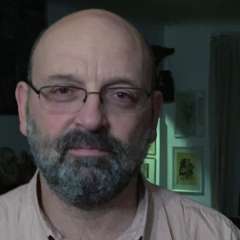After crisscrossing America via several music festivals this early summer − Music Mountain, Ravinia, Tanglewood, Portland, Aspen – the famed Emerson String Quartet stopped for a day in New York City, performing as part of Lincoln Center’s Mostly Mozart Festival. True to form, the Emersons scheduled almost completely different programs in each of the locations they visited over a short time span. For the evening at the Lincoln Center’s Alice Tully Hall, they opted for Schubert’s String Quartet no. 13 “Rosamunde” and Dvořák’s Piano Quintet no. 2, all of which was prefaced with Henry Purcell’s short Chacony in G minor, a less well-known work, but one that contributed to the ubiquitous melancholic atmosphere created by the two programmatic warhorses.
There were a couple of changes to the ensemble’s well-known routine. The two violinists and the viola player played sitting, rather than standing as they usually do, whenever guest pianist Emanuel Ax was onstage. Uncharacteristically, Eugene Drucker and Philip Setzer chose not to share the duties of playing the first violin equally. Setzer took the role for both the Schubert and Dvořák while Drucker did so only during the five-minute-long piece by Purcell.
Schubert’s A minor string quartet (1824) and Dvořák’s A major piano quintet (1887) are two important markers framing the evolution of chamber music during the Romantic era. Both have a classical four-movement structure and include transfigured elements of folk songs and dances, offering interpreters more opportunities for thoughtfulness than for pure display. Beyond the obvious Brahmsian influence, Antonin Dvořák is also a clear influence, especially in the second theme of the Allegro while Schubert's spirit hovers over the "Dumka" Andante.
Unfortunately, for such a glorified ensemble, this was not an exceptional interpretation of Schubert's quartet. Clearly, the members of the Emerson Quartet have reached a level of cohesiveness that many other groups can only dream of. Melodic patterns and elements of contrapuntal dialogue move from one instrument to the next with amazing smoothness even if, on this particular occasion, the intonation didn’t always seem to be fully consistent. But, beyond technical considerations, it was a reading that lacked vibrancy and the nostalgic longing that characterizes the music of the Adagio didn’t seem heartfelt enough. The mercurial temperament that hides under the desolate musical landscape was, to a certain extent, absent.
After the intermission, Dvořák’s second piano quintet sounded full of energy, as if Emanuel Ax’s enthusiasm and passion for this music had lifted a low-hanging cloud. It was clear that this was going to be a special performance from the very first bars of the introductory dialogue between Ax and cellist Paul Watkins. Soon after, the second theme, introduced by the viola, gave us the opportunity to enjoy the exceptionally warm sound of Lawrence Dutton, who played an increasingly prominent role as the movement progresses.
The quality of interplay between piano and the string quartet was outstanding during the entire rendition of a composition that constantly swings between melancholy and joyousness. Sometimes the piano swirled above chords. Alternatively, it plunged in between them or weaved its way in and out the quartet’s tessitura. A remarkable performance indeed.




